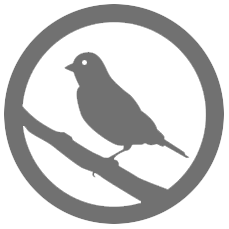The Plastikov v4 and Back Flag White Paper
May 23, 2024
|
PLASTIKOV v4: NOW COPYRIGHT FREE 
The Plastikov v4 is now on DEFCAD. The Plastikov v4 documentation and images are also available. This file release, which I'm told is related to the AKM, is a landmark moment in the history of guncad. Now that it's outside the scope of copyright, we proudly present it to you. Apparently a team will be showing it off at PSA's AK Masters event on June 10th. We'll see about sponsoring one of the shooters.A PRIMER ON COPYRIGHT AND 3D GUNS 
For the inside scoop on how we negated the Plastikov's federal copyright, I recommend this saucy little work of history and theory. It's called the Black Flag White Paper. It turns out you don't have a copyright. And that IP is gun control. Oops.Sponsor EN BLOC PRESS 
Learn to love your inbox again with the En Bloc Press Newsletter. In each issue you'll discover fresh news on 3D printing, valuable insights about the gun industry, and thought-provoking perspectives on politics. Video AIMBOT V3 
Robots and DIY defense are here to stay. In the past month, Youtuber Excessive Overkill released a video detailing the third iteration of his aim assist airsoft project. The design may not be immediatley useful as a firearm platform, but the electronic systems could be integrated into some truly out-of-pocket designs. The system uses black-and-white cameras, infrared lights and isolating the frame location and overall resolution to maximize effective frame rate for feedback. Assuming a retro-reflective surface and cameras to the sides of the barrel, there are adjustments that can be made in software to link to industrial motors. It actually uses stereoscopic calculation to figure out where the target is in three-dimensional space so that standard trajectory calculations can be processed. Primarily made from machined aluminum and off-the-shelf industrial components, there is an aside in the video on some 3D printed designs for silicon molds that create metal-filled resin gears. This is a fairly advanced hobbyist mechatronics project but that doesn't mean its totally irrelevant to DIY defense. It does not appear that any system that could host a fully functional semi-automatic fire control, reciprocation, and magazine subsystems would be man-portable, let alone considering the control and power systems, but it could work as a stationary turret. Outside of how hazardous it is to give a robot control over a firearm, autonomous and electronic firing control are legally dubious, to say the least. It is still great that such experiments are being done at all and that Youtube has not just kept it up, but also algorithmically distributed it to nearly a million viewers. 3DP Settings ORIENTATION AND SUPPORTS 
One of the most important steps in a successful print comes down to how any given part is setup in your slicing software. Print orientation is the specific location and angle to which the part is aligned during the printing process. The main consideration is making sure that the part is given adequate support. Since parts are laid out line by lin and layer lines cannot normally be printed hanging in the air, they need a foundation. But when it comes to DIY defense, you have to consider how the final part is going to be used. Prints are weakest at the points where the layers are laid upon each other. Forces during operation will tend to shear the part along these layer lines. As such, most prints for DIY defense applications are printed at a 15 degree angle since the lines of force will be applied orthogonal to the printed lines rather than purely across the layers. When you import your part into your slicer of choice, be sure to click on the part and adjust the angle as your first step. At this stage, also make sure that features (such as holes) are aligned so that the edges of the feature can be easily printed. Watch the simulation of your post process to see how this will happen line by line. After a part is set to the proper orientation, most of the part will be hanging in space, and this is where supports come in. Supports are light infill structures generated by your slicer that attach to the part to make a temporary foundation that can be easily removed once the print is accomplished. Either standard or tree supports work. Normally there is an automatic procedure for support generation, but if you find this would produce too much support material in places that would be difficult, you can use the 'support paint' tool to tell the program exactly where you want support. Make sure that the 'Support Manual' setting is set as well as ensuring that all the areas between the part and the build plate are covered. The 3D Printer has to take a moment to increase the machine height to get to the next layer height and the material that extrudes during this short amount of time creates a 'layer seam.' If these layer seams interrupt functionality or look terrible you can adjust where the seams occur using a 'seam painting' tool in the same way you did with the support but this time on the side of the part. Once the part has been printed, be sure to let it cool down to room temperature and remove the material. It is recommended to use small snipping tools to break off where the supports connect to the part because you may damage the actual part. |



